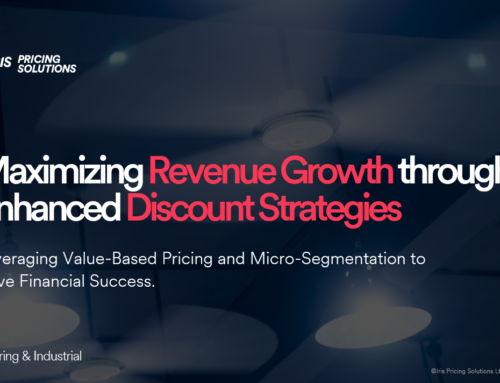Photo courtesy of Pexels
Time and time again we’ve seen pricing and value research pay dividends for our clients. Think, consumer research is to value-based pricing, what a paddle is to canoeing. It’s a pretty essential component. Otherwise you may find yourself up a creek; lost in ad-hoc pricing processes and decision-making just to stay afloat. In pricing we also talk a lot about developing an ‘outside-in’ perspective. The type of perspective that helps you understand what customers are willing to pay for. How do you gain that perspective? Well for starters, you ask. So in a move to better understand pricing research here are 4 research pitfalls and tips for avoiding them:
Pitfall #1: ‘One-Size Fits All’ When it Comes to Choosing Your Methodology
The success of your research largely hinges on the design. There are pros and cons to every analytical methodology and methodologies are evolving too. Take conjoint analysis for one. It’s by no means perfect, but it does ask respondents to make difficult tradeoffs in order to determine the features of a product or service that are valued most. Or rather, determines the features people will pay for.
Think about purchasing a new home. You make several tradeoffs before deicing to buy. For example, imagine two identical properties. One is ideally situated in the neighbourhood of your choice, while the other is much further away but much less expensive. A simple example, but which you choose says a lot about what you value more in a home: location or price. By presenting respondents with realistic purchase scenarios you are more likely to unearth true consumer behavior. Perhaps things even your customers didn’t realize. Pricing is a powerful lever of profitability and strategic, long-term pricing decisions depend on the number and accuracy of responses.
Pitfall #2: Design Stops at Methodology
Even if you’ve chosen an appropriate methodology, you still need to be aware of other bumps along the road. Framing effects for example, can be a particularly nasty bump. Think of the classic “25% fat versus 75% lean meat” study. The study showed how two descriptions – though essentially the same – can elicit very different emotional responses. Locally, a survey of Markham, Ontario residents came under fire for using framing effects to garner support for an NHL-sized arena in the area. So simply put, how are your questions asked?
Pitfall #3: Correlation Must Mean Causation
More often than not, research findings tell us whether or not a relationship exists between variables and not necessarily if one caused the other. In actual fact there could be a third, fourth or fifth factor at play! Coffee studies are a good example of this. As a Starbucks enthusiast, I’m intrigued by the headlines: sometimes they claim coffee is good for my health, other times it’s not. It was about this time last year I read a study in the New England Journal of Medicine that found coffee consumption to be associated with a lower risk of certain diseases. So although it may decrease the risk of some diseases, coffee consumption shouldn’t be confused for health benefits outside the scope of the study. It’s important to know the difference between correlation and causation in this case.
However, this type of research is important for defining areas where further investigation is needed. In pricing research, that means consumer preferences are continuously changing, as are the products and services within shoppers’ consideration sets. Don’t let early results sway you; clearly define the objective of your pricing research and stick with it. You may not get all the answers, but you will know which direction to go next. We always say pricing is a journey. If you make the mistake of stretching outside the limits of your research, you run the risk of facing even greater pricing challenges down the road.
Pitfall #4: Forgetting about the respondent
I recently bought a new laptop. Shortly after I received a customer satisfaction survey: how happy was I with the purchase experience? Seven survey questions later, the 3 months I spent ‘doing my homework’ suddenly didn’t seem so impressive. It’s been reported that respondents spend an average of just five seconds per question when asked to rate a product, service, feature, etc. on some form of scale. That equates to only sub-par data for statistical analysis.
How to improve responder engagement is an interesting question. Providing participants with almost real-time feedback is one possibility. For example, as sections of a survey are completed, respondents could see how they compare to other survey-takers (i.e. ‘50% of respondents also chose Option A’). Or perhaps the channels used to field a survey can be broadened, improving the compatibility with mobile devices for responders on-the-go. Whatever the answer may be for your research, improved responder rates help you and your organization make pricing decisions based on data, not gut-instinct.
Paul Hunt is the president of Pricing Solutions, an international pricing strategy consultancy dedicated to helping clients achieve world-class pricing competency. Paul occasionally publishes a pricing column in the FP Executive. He also writes for the Pricing Solutions Club. Article written in partnership with Mei Chen Lee, Research Consultant at Pricing Solutions





